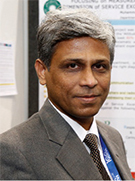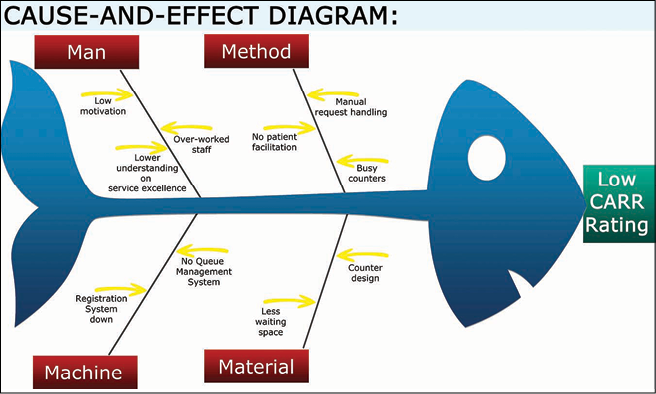Pakistani Hospital’s “Attitude” Project Improves Patient Service
An initiative designed to improve the patient experience by focusing on service excellence in the radiology department yields positive results

While staff in a busy multimodality radiology department is rightly focused on providing the right diagnostic and interventional services, patients expect more than that, according the presenter of an RSNA 2014 session.
“While patients come for 'care' solutions to their health problems, there is no denying that what they observe daily and usually assess and respond to in patient satisfaction surveys is the 'caring' part. They focus on whether the communication was polite, the staff, nurses and doctors exhibited positive attitudes, their needs were met timely and efficiently, and they were handled well and with respect during their hospital stay.” said Muhammad Akbar Khan, M.B.A., manager of radiology at Aga Khan University Hospital (AKUH), a 650-bed philanthropic, not-for-profit, private teaching institution in Karachi, Pakistan.
“This makes service excellence, and hence the patient's experience, and satisfaction of utmost importance,” said Khan, who presented a quality storyboard detailing AKUH's initiative to improve the patient experience by focusing on service excellence within the radiology department. “The idea was to do a measureable assessment of where we were in the eyes of those whom we serve and then act upon the assessment to improve the four dimensions of service excellence: communication, attitude, responsiveness, respect and caring,” Khan said. Those modes of behavior are as important as patients' healthcare needs, he added.
While the baseline assessment identified improvement opportunity in all four categories, the Attitude rating in the radiology department was estimated at 64 percent. The hospital set a goal to bolster the Attitude rating to at least 80 percent within a 12-to16- month period by using a systematic approach to ensure a “delightful patient experience.” The approach included timely guidance upon entry, complete information with courteous communication, quick processing of test formalities, positive and welcoming staff, radiographers and radiologists, and an easy-to-approach leadership for addressing their concerns.
Daily Bulletin coverage of RSNA 2014 is available at RSNA.org/bulletin
An analysis of patient satisfaction findings and patient complaints yielded expected behaviors from staff, including radiographers. Staff training sessions incorporated role modeling and video records of actual interactions between patients and staff to identify “do's” and “don'ts.” In addition, supervisors more frequently monitored interactions with patients, and a “meet-and-greet service” was created to welcome and guide patients. Special dinners, breakfast gatherings and other events served to keep staff motivated.
"Attitude" Goal Met
The hospital's interventions were implemented in early 2013. By December of that year, the Attitude rating had improved from 64 to 82 percent.
While changing attitudes is a challenging task, small and focused actions with continuous reinforcement help create desired improvements, Khan said. “When the team started exploring why our Attitude rating was so low, the striking finding was that the staff had an emotional disconnect within the team,” he said. “There was some basis for such feeling—lack of positive attitude within the team both when mistakes are used to reprimand staff without addressing the 'system' part of the cause and when good work is ignored without praise.
“With deliberate efforts to ensure that mistakes are used as learning opportunities and good work is publicly praised, we saw the most remarkable change in the Attitude rating,” Khan continued. “You plant wheat to get wheat ... you give service excellence to get service excellence.”
